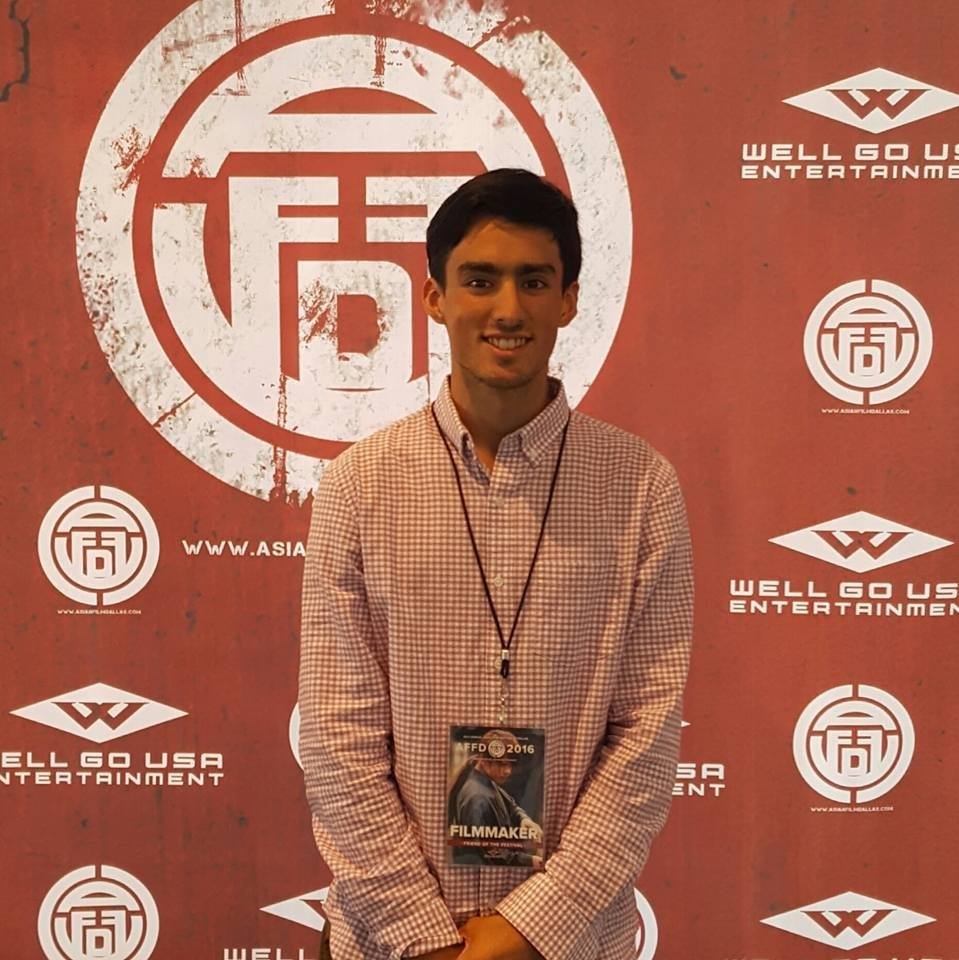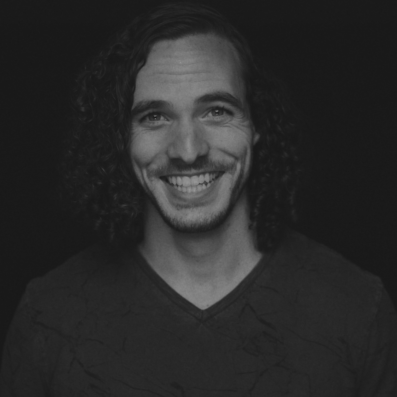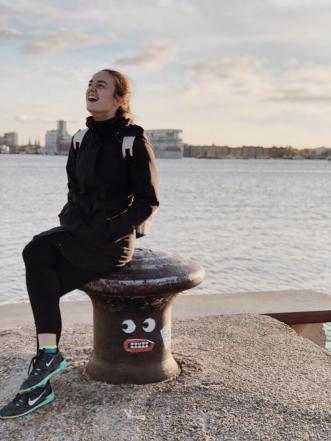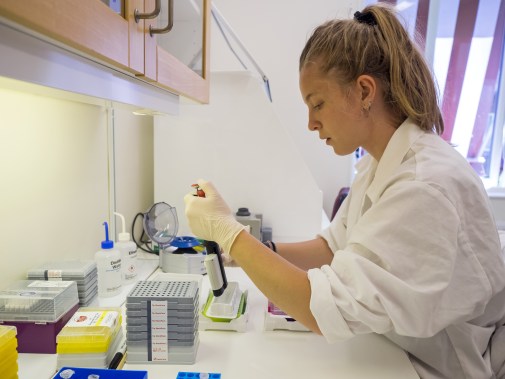Wobistdude: When and how did you get involved with the game?
Matt: I was about 3 years old when I first started playing as my older brother, Mark, was a very good player himself and was the reason I got into the game. It was his main sport, and like any younger brother I wanted to copy what my older brother was doing. At the ripe old age of 9, I already had a massive decision to make: join PDA, a prestigious club within New Jersey, or stay on my town team (Montgomery) where my father was one of the coaches. I knew I wanted to be one of the best, and if I wanted to reach my potential, staying with the comfort of my town team was not the right option. At 9 years old, I made that decision on my own and looking back it was definitely the right decision.
W: You played up until you were in college at Villanova University. Do you think your time with the game has shaped your personal and or professional development?
M: Absolutely, 100%–growing up playing this game, you learn lessons that will serve you your whole life. Having a coach you may not necessarily love, is like having a bad boss and you have to learn how to manage and navigate that relationship. You learn how to cope with pressure; nothing in my professional career has given me nerves quite like those that you feel while competing for a spot in the US national team. In college, you learn all about time management—being a D1 athlete means you only really have time for academics and athletics if you want to excel at both. And of course group dynamics; what makes a team tick and how important chemistry and comradery is within a team. The list could go on and on, the lessons I have learned through this sport are endless and invaluable—the sport has shaped me into the man I am today.
W: Why Real Madrid? Describe your connection to this club.
M: I have always felt a connection to Real Madrid as I was born in Madrid, Spain. My father was based in Madrid while working for Mobil Oil for 6 years and I spent the first three years of my life in Spain. I have always been attracted to the grandeur of the club—the gleam and prestige of the white jerseys, the legends that have played for the club (Zidane, Figo, Raul, Roberto Carlos, Beckham, Sergio Ramos, Marcelo, Ronaldo, etc..), and the gentleman like values they uphold. I joke with my girlfriend that I have “sangre blanco”, white blood. I really became hooked in 2003 when David Beckham joined as he was my role model growing up. From that year on, I rarely ever missed a game and love the club wholeheartedly.
W: What is Managing Madrid and how did you become a part of this publication?
M: Managing Madrid is a Real Madrid specific sports publication and blog that is an affiliate of Vox Media and SB Nation. The site is one of the largest English speaking Real Madrid followed sites in the world with over a million clicks and views per month. We produce a podcast, which is free on Sundays, but our midweek shows are available only for “patrons” who pledge $3 or more a month. The show boasts thousands of listeners globally.
I became a part of Managing Madrid by doing a little research and being a little persistent. I had been a fan of the site and a listener of their podcast prior to joining the team. When listening to a podcast or reading an article, I often found myself eager to voice my opinion or share some insight. I ended up doing a little research on the chief editor’s and creator of Managing Madrid and eventually found his work email. I shared with him my background (academics, work, connection to Spain), my interest in RM, my playing career, and my writing style and what it was that I could bring to the Managing Madrid table that would differentiate myself from others and add value.
W: Has the shift from player to online publication editor changed or added a new level of perspective to your understanding/ relationship with the game?
M: Yes, I now watch matches analytically rather than leisurely. Depending on the type of piece I am planning to put out, say a tactical review of the last match, you have to take diligent notes at specific minutes and moments in the game, often have to pause the game (thank you DVR) and look at the patterns of the match and shape of the formations, and I am often watching a match or certain parts of a match more than once.
W: What’s a new development, young player or interesting trend on the rise in soccer that people should be looking out for?
M: I will give you a piece of each—
New Development: Soccer Analytics. For years, a sport like Baseball has had innumerable amount of statistics and data that made decisions for sporting directors or franchise owners easier (as evidenced by the movie “Money Ball”). Soccer is now developing more advanced and complex statistics. One such stat is “Expected Goals” or “xG”. Expected goals give you a glimpse into how a match was really played out. For instance, if one team had 30 shots compared to their opposing team who had 7 and the team with 30 shots also had 70% possession vs 30% from their opposition yet they lost the match 1-0, you could then look at their expected goals (how many goals they would have normally scored given the opportunity) and you could potentially see an xG of 4.2, meaning they should have scored 4 goals.

Young Player to Watch: I’ll try to share some under the radar players rather than bigger names. For US Soccer, Tyler Adams is a 19 year old defensive center midfielder headed to Germany this January to play for RB Leipzig. And I have to throw a Real Madrid player into the mix: Vinicius JR. He is an 18 year old “Brazilian Wonder Kid” labeled the next Neymar. He is still very raw, but has incredible speed and can breakdown any defender 1v1.

Interesting Trend: The inflation of the transfer market in the last couple of years. Soccer players never sold for more than 80 million euros or so (that was the very high end with Cristiano Ronaldo in 2009). But since the Neymar transfer to PSG (222 million euros), prices for players are ridiculously inflated and have seen more average players (relative terms) sell for prices much higher than what their value would have been just a few years ago.
W: Let’s talk podcasting, why is this such a special way to share analysis, discussion and speculation surrounding Real Madrid or even soccer in general?
M: Let me preface this by saying I love podcasts. It is such an incredible medium—I am podcast junkie. Take advantage of your commute time or while cooking in the kitchen or walking your dog—whatever it may be you can capitalize on that time by listening to podcasts. I have learned a tremendous amount about Real Estate through podcasts, about personal finance, politics, Spanish football, incredible stories from celebrities and athletes, TED talks, you name it and there is probably a podcast for it. Podcasts allow you to share a wealth of information without any real limitation—you are not held back like you are on the radio, you can share your thoughts unchained.
W: Apart from going to games, watching TV in the living room or bar, do you see digital media (podcasting, blogs, social media) as the future for soccer analysis?
M: I do, and as mentioned above I think you will see more advanced statistics continue to emerge which will help enhance peoples understanding of the game and level of communication surrounding the game.
W: Hypothetical situation: you are watching the game with a friend who only has a rudimentary understanding of soccer (ball in net = goal). Which simple things would you have them pay attention to in order to create a better understanding/ a more fulfilling enjoyment of the beautiful game.
M: I think the best way to start watching the game is to pick a team—find one you have a connection with and then select few players from that team that you enjoy watching. Find information on their background and what their story is—where did they come from? How did they make it? What has been their struggles and their triumphs? Once you can connect to the names on the back of the shirts and get an idea for who these guys are, you then fall in love with the way they play, there is no turning back.
W: Why is Sergio Ramos your favorite player and what can we learn from watching him play?
M: Sergio Ramos joined Real Madrid when I was really started to get into watching every match. I just had a feeling about him, that he would be special (he was 19 years old when he joined). Now at 32 years of age, he is a club legend and the captain of the team. He has won an unprecedented 20 trophies including 4 Champions Leagues, a World Cup (with Spain), and 2 European Cups (with Spain).

He is my favorite player for multiple reasons, but specifically because of the leadership he exhibits on the field (even when he was 19) and the passion he has for the sport and the club. He is the perfect ambassador for Real Madrid values and he has developed into one of the best center backs to ever play the game—his CV is a testament to that.

Matt Wiltse resides in Dallas, Texas where he acts as a Division Sales Manager for Sunoco LP and both manages/acquires accounts in the DFW area spanning all the way to Austin—one of Sunoco’s most challenging and profitable markets. Matt grew up in Montgomery, NJ before attending Villanova University on an athletic scholarship to play Division I soccer. Has remained a lifelong fan of the game; a die-hard Real Madrid supporter who can be found writing op-eds for Managing Madrid and occasionally co-hosting the MM podcast. As an additional interest, Matt has developed a passion for Real Estate Investing and personal finance. Though above all, Matt prioritizes family and loves spending time with girlfriend of four years and their puppy, Charlie-Bear. He can be found on the following platforms (twitter is primarily for soccer opinions): twitter, instagram , linkedin
Matt Also Contributed:Change is Inevitable, Embrace It!








 Chris Bellizzi is a photographer, filmmaker, and survival-based cocktail craftsman. A perpetual fan of road trips and window seats, he recently embarked on a nine-month journey across thirteen countries capturing an episodic documentary on candid cultural perception. Back now in the great state of New Jersey editing this project, Chris is looking forward to making new connections and finding new perspectives to keep the creative juices flowing.
Chris Bellizzi is a photographer, filmmaker, and survival-based cocktail craftsman. A perpetual fan of road trips and window seats, he recently embarked on a nine-month journey across thirteen countries capturing an episodic documentary on candid cultural perception. Back now in the great state of New Jersey editing this project, Chris is looking forward to making new connections and finding new perspectives to keep the creative juices flowing.




























 Stephen is a South African / British Engineer, passionate about new ideas and innovations. He enjoys any kind of adventure sports and the outdoors. Since 2016, he has been pursuing the goal to bring empty houses back into use, thus, bringing life back to communities, as the
Stephen is a South African / British Engineer, passionate about new ideas and innovations. He enjoys any kind of adventure sports and the outdoors. Since 2016, he has been pursuing the goal to bring empty houses back into use, thus, bringing life back to communities, as the  Sean Pollock is a multi-disciplinary writer, director, designer, and artist. Recent credits include: American Juggalo (Porterspace Residency/Vital Joint/The New Ohio) A Very…Scientology Pageant: In Concert (The Green Room 42 & 54Below), Laundryfest, The Bed Show, Super Short Site Specific Festival, Phantom of the Paradise (Secret Loft), Intimate Bar Plays, #serials (The Flea), I’m Smiling Because I’m Uncomfortable (NYC and Touring. Winner: “Outstanding Site-Specific Performance” San Diego Fringe 2018). Off-Broadway: Trump Rally (United Solo/Theatre Row). He currently serves as the Literary Associate for The Dirty Blondes and is a company member of Unattended Baggage. Training: Ithaca College, NTI, Directors Lab North, Directors Lab Chicago, Directors Lab West.
Sean Pollock is a multi-disciplinary writer, director, designer, and artist. Recent credits include: American Juggalo (Porterspace Residency/Vital Joint/The New Ohio) A Very…Scientology Pageant: In Concert (The Green Room 42 & 54Below), Laundryfest, The Bed Show, Super Short Site Specific Festival, Phantom of the Paradise (Secret Loft), Intimate Bar Plays, #serials (The Flea), I’m Smiling Because I’m Uncomfortable (NYC and Touring. Winner: “Outstanding Site-Specific Performance” San Diego Fringe 2018). Off-Broadway: Trump Rally (United Solo/Theatre Row). He currently serves as the Literary Associate for The Dirty Blondes and is a company member of Unattended Baggage. Training: Ithaca College, NTI, Directors Lab North, Directors Lab Chicago, Directors Lab West. 





 “Hi. My name is Patrick Higgins and I am the founder and President of
“Hi. My name is Patrick Higgins and I am the founder and President of 







 Anonymous: For our post titled “Caracas in Crisis” we conducted an interview with a young woman who chose to remain anonymous. She is a student living through the political turmoil that has drastically altered everyday life for the people of Venezuela.
Anonymous: For our post titled “Caracas in Crisis” we conducted an interview with a young woman who chose to remain anonymous. She is a student living through the political turmoil that has drastically altered everyday life for the people of Venezuela. Arianna Soldati: is a Volcanologist and Science Communicator. Originally from Italy, she is currently based in Munich, Germany, but will happily go wherever her unusual career may bring her in the future. She only enjoys hiking “mountains” that have a crater on the top, and she will never tire to talk about them.
Arianna Soldati: is a Volcanologist and Science Communicator. Originally from Italy, she is currently based in Munich, Germany, but will happily go wherever her unusual career may bring her in the future. She only enjoys hiking “mountains” that have a crater on the top, and she will never tire to talk about them. Alexander Watson: As a forest investment expert and a manager of several sustainable reforestation projects in Latin America and South East Asia, Alexander has a broad experience in implementing and promoting international forestry projects. To his academic merit, he holds a Bachelor in Forestry from the Technical University of Dresden in Germany and a Postgraduate Certificate in Social Banking and Social Finance from the University of Plymouth in the United Kingdom.
Alexander Watson: As a forest investment expert and a manager of several sustainable reforestation projects in Latin America and South East Asia, Alexander has a broad experience in implementing and promoting international forestry projects. To his academic merit, he holds a Bachelor in Forestry from the Technical University of Dresden in Germany and a Postgraduate Certificate in Social Banking and Social Finance from the University of Plymouth in the United Kingdom. Morgan Randall: Morgan is an American data scientist working in a small town outside of Munich. He enjoys learning about the world through drawing the strangers around him with both his hands.
Morgan Randall: Morgan is an American data scientist working in a small town outside of Munich. He enjoys learning about the world through drawing the strangers around him with both his hands. Health Us Nepal:We are a small spanish NGO acting in Nepal. We provide health to Humla, the remotest and poorest region in Nepal. We can do that thanks to the heart of Marc, our doctor. He was adopted by a catalan family, and after he finished medicine studies, he decided to go back to his origins and start the project of his life.
Health Us Nepal:We are a small spanish NGO acting in Nepal. We provide health to Humla, the remotest and poorest region in Nepal. We can do that thanks to the heart of Marc, our doctor. He was adopted by a catalan family, and after he finished medicine studies, he decided to go back to his origins and start the project of his life. Mandy Ho:Mandy is from Germany, Hong Kong, and Vietnam. A Third Culture Kid, she is currently living in Amsterdam, the Netherlands, but who knows how long it'll be until her next adventure. When she's not raising awareness about gender equality, climate crisis, and mental health, she loves to get out of her comfort zone and experience new things such as aerial and bungee dance classes and volunteering at TedX and hopefully the UEFA Euro 2020
Mandy Ho:Mandy is from Germany, Hong Kong, and Vietnam. A Third Culture Kid, she is currently living in Amsterdam, the Netherlands, but who knows how long it'll be until her next adventure. When she's not raising awareness about gender equality, climate crisis, and mental health, she loves to get out of her comfort zone and experience new things such as aerial and bungee dance classes and volunteering at TedX and hopefully the UEFA Euro 2020 Smita and Earthoholics:I am fascinated by the wonders of nature and find myself on this journey exploring beautiful minds, interesting cities, cultures and people.
Smita and Earthoholics:I am fascinated by the wonders of nature and find myself on this journey exploring beautiful minds, interesting cities, cultures and people. WeBuilding is a Berlin-based non-profit organization founded by an international group of architects, united by a common purpose: to help deprived communities through sustainable building projects. We serve as the support for the local NGOs, helping them to further develop their own projects. With our architectural background, we believe we can provide valuable technical expertise so that both the construction and the design can be done as efficiently as possible.
WeBuilding is a Berlin-based non-profit organization founded by an international group of architects, united by a common purpose: to help deprived communities through sustainable building projects. We serve as the support for the local NGOs, helping them to further develop their own projects. With our architectural background, we believe we can provide valuable technical expertise so that both the construction and the design can be done as efficiently as possible. gaia-liNc is a german-based organization formed by Latin-American and European members committed with the sustainable development of Latin America’s communities and their territories.
gaia-liNc is a german-based organization formed by Latin-American and European members committed with the sustainable development of Latin America’s communities and their territories. Erin Skoczylas is an American photojournalist and communications specialist living in Berlin Germany. Since her start in photography in 2013, Erin has covered socio-environmental topics and issues in areas such as the Brazilian Pantanal, the Peruvian Amazon, and an immigration crisis in Central America. She is currently in her masters of International Relations and Cultural Diplomacy to explore the role of communications between stakeholders to encourage environmental policy. You can see more of her work at
Erin Skoczylas is an American photojournalist and communications specialist living in Berlin Germany. Since her start in photography in 2013, Erin has covered socio-environmental topics and issues in areas such as the Brazilian Pantanal, the Peruvian Amazon, and an immigration crisis in Central America. She is currently in her masters of International Relations and Cultural Diplomacy to explore the role of communications between stakeholders to encourage environmental policy. You can see more of her work at  Silicon Drinkabout is a free weekly event that brings people from the startup scene in Munich together. News, updates and events around Silicon Drinkabout Munich
Silicon Drinkabout is a free weekly event that brings people from the startup scene in Munich together. News, updates and events around Silicon Drinkabout Munich Eagle Rock School and Professional Development Center is a full-service not-for-profit educational reform organization. Eagle Rock operates a tuition-free, year-round residential high school in Estes Park, Colorado, and provides professional development services at school and community sites around the United States.
Eagle Rock School and Professional Development Center is a full-service not-for-profit educational reform organization. Eagle Rock operates a tuition-free, year-round residential high school in Estes Park, Colorado, and provides professional development services at school and community sites around the United States. Kartiki Gonsalves was born and raised in India, She documents our natural world to better understand the profound connection that we share with it by bringing awareness to the challenges we face, but also focuses on solutions with her projects and shows success stories where conservation is working. Her ultimate goal is to create a lifetime body of beautiful work that has deep meaning and that carries a message of hope for preserving what we have which will make a difference for the generations to come. She is currently working on a nature documentary in southern India on the bond between an orphaned baby elephant and his human caregivers. Kartiki is also deeply in love with Orcas and enjoys kayaking.
Kartiki Gonsalves was born and raised in India, She documents our natural world to better understand the profound connection that we share with it by bringing awareness to the challenges we face, but also focuses on solutions with her projects and shows success stories where conservation is working. Her ultimate goal is to create a lifetime body of beautiful work that has deep meaning and that carries a message of hope for preserving what we have which will make a difference for the generations to come. She is currently working on a nature documentary in southern India on the bond between an orphaned baby elephant and his human caregivers. Kartiki is also deeply in love with Orcas and enjoys kayaking. Melissa Angel is an environmental communicator working at the Global Landscapes Forum. She is also an avid banjo player and mom to a dog named Morby!
Melissa Angel is an environmental communicator working at the Global Landscapes Forum. She is also an avid banjo player and mom to a dog named Morby! Felipe Guarin is a creative executive living in Tokyo, Japan, with strong branding and marketing experience and a passion for technology, design and applied creativity complemented with a successful start-up experience. He studied Political Science at the Externado University in Bogotaì and later did a Masters in Marketing at the Pompeu Fabra in Barcelona and a Master in media design at Keio University in Tokyo. He is a Colombian experiential designer and entrepreneur who started working as a creative for BBDO. His experience at BBDO gave him enough confidence led him to start his design studio called Whatever Works. The studio has quickly become a hub for brands looking for a novel way to connect with their consumers. Some clients include Discovery Chanel, Jack Daniel’s, and Netflix. Felipe has been researching over the last 3 years the relation between games, sports, and technology he started in the field intuitively and ended co-founding Kinix a video game studio based in Japan that aims to dissolve the line between sports and e-sports.
Felipe Guarin is a creative executive living in Tokyo, Japan, with strong branding and marketing experience and a passion for technology, design and applied creativity complemented with a successful start-up experience. He studied Political Science at the Externado University in Bogotaì and later did a Masters in Marketing at the Pompeu Fabra in Barcelona and a Master in media design at Keio University in Tokyo. He is a Colombian experiential designer and entrepreneur who started working as a creative for BBDO. His experience at BBDO gave him enough confidence led him to start his design studio called Whatever Works. The studio has quickly become a hub for brands looking for a novel way to connect with their consumers. Some clients include Discovery Chanel, Jack Daniel’s, and Netflix. Felipe has been researching over the last 3 years the relation between games, sports, and technology he started in the field intuitively and ended co-founding Kinix a video game studio based in Japan that aims to dissolve the line between sports and e-sports. Lakshika Serasinhe is a cinematographer and director from Galway, Ireland.
Lakshika Serasinhe is a cinematographer and director from Galway, Ireland. PowerPlay is an approach to fitness which incorporates a playful and experimental mindset. Fozzy (aka Prof. Dr. Eckehard Moritz) heads the innovation consultancy Innovationsmanufaktur in Munich and Raluca Muntean is a designer and acrobat also living in Munich. View the recent work from Powerplay here:
PowerPlay is an approach to fitness which incorporates a playful and experimental mindset. Fozzy (aka Prof. Dr. Eckehard Moritz) heads the innovation consultancy Innovationsmanufaktur in Munich and Raluca Muntean is a designer and acrobat also living in Munich. View the recent work from Powerplay here:  Petra is a Global Marketing professional and dance company founder based in Jersey City, NJ. She balances her love of Excel spreadsheets with her passion for contemporary choreography, all while cuddling her two cats, Basil & Poppy.
Petra is a Global Marketing professional and dance company founder based in Jersey City, NJ. She balances her love of Excel spreadsheets with her passion for contemporary choreography, all while cuddling her two cats, Basil & Poppy. Sara: “Hi everyone, I’m Sara and I am an American living in Germany. On my youtube channel,
Sara: “Hi everyone, I’m Sara and I am an American living in Germany. On my youtube channel,  Poonam is born, raised, and educated in New Jersey, and she currently lives and works in Brooklyn. She is a curriculum development manager at a leading edtech company; outside of her corporate 9am-5pm, Poonam runs a very small business that sells authentic masala chai kits inspired by her mum’s top secret recipe. Check out @
Poonam is born, raised, and educated in New Jersey, and she currently lives and works in Brooklyn. She is a curriculum development manager at a leading edtech company; outside of her corporate 9am-5pm, Poonam runs a very small business that sells authentic masala chai kits inspired by her mum’s top secret recipe. Check out @ Trevor May is a cinematographer and filmmaker from Atlanta, GA. His focus is primarily on documentary storytelling but has worked in narrative, commerical and music videos as well.
Trevor May is a cinematographer and filmmaker from Atlanta, GA. His focus is primarily on documentary storytelling but has worked in narrative, commerical and music videos as well.